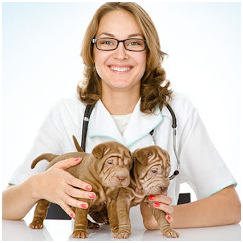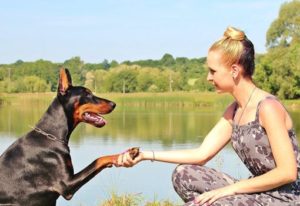Rescues
There are many stories of successful rescue groups. These groups rescue hundreds and even thousands of dogs and cats each year, and place them in safe, loving forever homes. There are also stories in the media about rescue groups that aren’t as successful. These stories involve pets that were placed in unsuitable homes, overcrowding and lack of resources in rescue shelters, and other heartbreaking stories.
Don’t Become Overwhelmed
This is the most important thing to remember. Just about every animal lover wants to help ALL of the dogs and cats they see. However, it’s not possible to save every animal, as heartbreaking as it is. Take on only the pets that you have space and resources for. Remember: Save one, until there are none left to save.
Keep Thorough Records
This is also important, especially if your rescue has obtained 501(c)3 status. Keep records on everything – home checks, potential adopters, adoptive homes, donations received, volunteer information. Even the most seemingly mundane information may make a huge difference someday, especially if you run into difficulty. These records can also help you identify bad adopters, or those who aren’t suitable pet parents. And make sure your records are stored in a safe place.
Be Transparent
It is important to keep a level of transparency with your volunteers and adopters, especially if you are accepting donations. Many media reports have come to light regarding rescues that took donations for pets that they had no intention of helping. These pets died in shelters, waiting for someone to come; while their names and faces were being blasted all over social media and donations came pouring in. No one knows the disposition of the donations that were accepted for these animals. If you do accept monetary donations, a Fundrazr or GoFundMe account is helpful, so donors can get a real-time total of donations.
Adoption Fees
We’ve all heard the dangers of giving pets away for free to “good home.” You never know who is waiting to obtain animals for hunting, fighting or other sinister reasons. When you charge a reasonable adoption fee, you are going to deter a lot (but not all) of the unsuitable adopters. And these adoption fees will help you vet the pets in care of your rescue.
Don’t Skimp on Care
The animals in care of your rescue deserve proper nutrition and proper vetting. Make sure your pets are up-to-date on shots and preventatives. It’s also best to have each pet spayed or neutered upon intake, so they won’t be able to go out and make more unwanted pets that need rescue.
Check Them Out
Don’t give a pet to a potential adopter because they seem nice. Check references, check the adopter’s background, and do a home visit. If something feels “off,” it most likely is. You don’t owe any potential adopter a pet. However, you do owe the pets you serve the opportunity to be sent to only the best homes. It’s better for an animal to stay in rescue than to go to a home where it will not receive proper care.
What to Do If You Have an Issue
If you have a problem with an adopter, volunteer or critic of your rescue, don’t engage with them. Several rescues have carried out flame wars with their detractors on social media. This tarnishes the reputation of the rescue and above all, hurts the animals in the care of the rescue. Most potential adopters don’t want to be involved in drama, and will not adopt a pet from a rescue that seems unprofessional. Get an attorney and do it right away. Most rescues are short on funds, so if you can, locate an attorney that does pro bono work. Your volunteers and supporters may be able to direct you to an attorney that is passionate about animals; this attorney may offer their services free of charge.
Establishing a rescue can be rewarding for you, your volunteers, the community you assist, and especially the pets you place in loving homes. However, it’s important to take the proper steps to protect your rescue and the pets you serve. Doing things the right way will ensure that each animal you assist gets a loving home that will take care of them for the rest of their days.
Financial Aid
The numbers of homeless animals are constantly increasing. There are numerous rescue groups and shelters that are trying to help every animal they can. However, this does not come without a cost. Animals must be fed, vetted and cared for while they await homes. Adoption fees only cover a portion of these costs. So, how do you raise the necessary funds to take care of the animals in care of your organization? It’s time to think beyond putting buckets out by the cash registers at local businesses and hoping for the best. We’ve put together a list of the three best ways to raise funds.
Social Networking
Social networking is one of the best ways to help needy animals find homes; it is also one of the best ways to raise funds to care for homeless animals. If you haven’t already, set up a page for your rescue group on Facebook (or other sites of your choice; Facebook is most effective). Make sure you update your page often with pictures of the pets you are helping to find homes, as well as news and events. Then, set up a page for your rescue group on a fundraising site – Fundrazr and GoFundMe are two popular sites. Link this page on your Facebook wall, and let your visitors know that you are gratefully accepting donations for pets. When donors can see their donation added to the tally in real-time, they are more likely to donate.
Fundraisers
There are hundreds of fundraiser ideas, beyond the traditional bake sale or rummage sale. If any of your volunteers are involved in direct sales, ask them if they’d like to host an online fundraiser and donate their commission to your rescue. Most consultants are happy to donate their commission; fundraisers give them the sales to boost their totals. You can host your fundraiser online, so supporters from across the country can assist, even when they can’t be there in person. And don’t forget to put your fundraiser information on your social media page to help get the word out!
Business Donations
Many businesses are happy to support local shelters and rescue groups. This is especially true for smaller, independently owned and operated businesses. Most owners liked to be asked, so don’t hesitate to send out a letter soliciting donations. Or better yet, stop by and visit in person. In exchange for their donation, you can offer to list them prominently in your organization’s news letter, on your website, or your social media wall. This also helps them boost their sales, so everyone wins.
When asking for donations, it’s important that you be completely transparent with the numbers and the information on what you are using these funds for. This will boost confidence in donors, and ultimately help the pets in your care!
NuVet Labs – Giving Back
NuVet Labs® is a proud contributor to an assortment of charities and rescue organizations as part of our desire to help those in need that are unable to help themselves. Animals are often the innocent victims of abuse or abandonment that could be remedied with a helping hand.
As pet and animal lovers, we have taken it upon ourselves to contribute to endeavors that support and improve the lives of our furry companions who have unconditionally given their love and lives to us. It is our goal to find new ways to help provide the most complete immune system support through proper nutrition and care.
Since 1997, NuVet Labs® has been giving back to these furry members of our planet that have been our companions, co-workers, rescuers and friends; those that ask so little in return.
To request a donation, please email contact@nuvet.com








